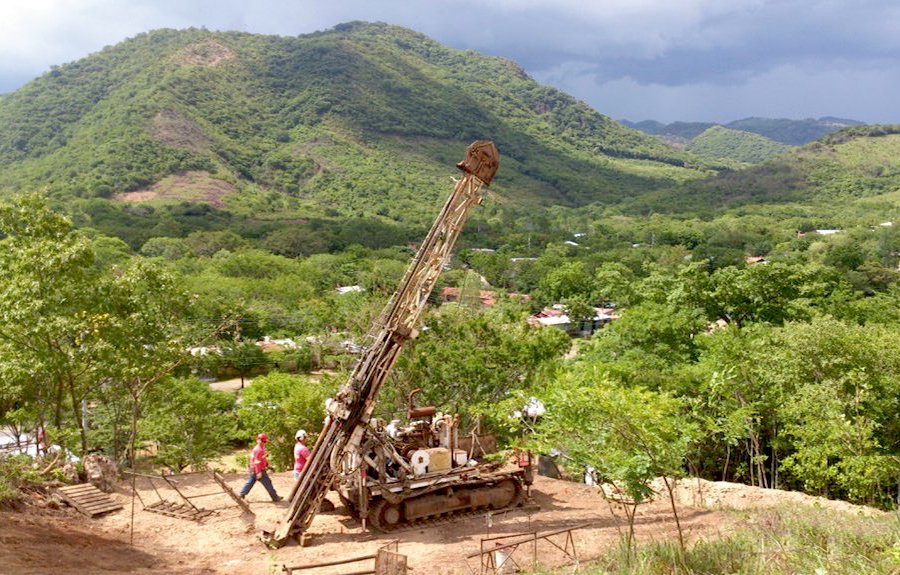Mining
Thursday, May 2nd, 2024 3:37 pm EDT
Key Points
- Drilling Results and Financing:
- Results from the maiden drill program at the B26 polymetallic deposit show promising outcomes, with drill hole 1274-24-339 intercepting 2.82% CuEq over 44.5 meters.
- Abitibi Metals is fully financed with $18 million to complete the remaining 16,500 meters of the 2024 work program and an additional 20,000 meters in 2025.
- Project Overview:
- The B26 main deposit spans a continuous strike length of one kilometer, with mineralization historically drilled to a depth of 0.85 kilometers with limited coverage.
- Drill holes targeted extensions of the high-grade lens identified in previous drillings, aiming to better define the high-grade lens and outline the lower-grade near-surface halo, supporting a bulk-tonnage open-pit target.
- Technical Information and Qualified Person:
- Core logging and analysis are conducted by Explo-Logik in Val d’Or, Que., with samples processed by fire assays and four-acid digestion for gold and base metals.
- Martin Demers, PGeo, OGQ No. 770, has reviewed and approved the technical information, serving as the qualified person under National Instrument 43-101.
Abitibi Metals Corp. has released results from the 13,500-metre maiden drill program at the B26 polymetallic deposit completed under the first phase of a fully financed 30,000-metre 2024 field season. Abitibi Metals is fully financed with $18-million to complete the remaining 16,500 metres planned for the 2024 work program, as well as an additional 20,000 metres in 2025, which will be incorporated into a preliminary economic assessment to complete the option. On Nov. 16, 2023, the company entered into an option agreement on the B26 deposit to earn 80 per cent over seven years from SOQUEM Inc. (see news release dated Nov. 16, 2023).
Jonathon Deluce, chief executive officer of Abitibi Metals, commented: “The drilling at B26 continues to deliver exceptional results as seen in No. 339, which intercepted 2.82 per cent CuEq over 44.5 metres, extending the high-grade lens outlined in No. 294 laterally, 20 metres to the east. This hole continues to add to the goal of better defining the high-grade lens while also outlining the lower-grade near-surface halo, supporting our bulk-tonnage open-pit target. We will utilize the successful drilling at 293 to 294 and 339 to 341 to further target this and other high-grade lenses within and outside the main deposit. With the copper price breaking out, projects like B26, located in the world-class jurisdiction of Quebec, stand out globally for their potential to deliver critical metals at a time when there is a clear rising need for copper.”
Mr. Deluce continued: “We are in an excellent position for the coming months, with $18-million in our treasury. This funding will support the 16,500 metres of drilling planned at B26, as well as an additional 20,000 metres in 2025. We expect to continue to have plenty of news in the coming weeks as we remain one of the most active junior companies in the mineral-rich Abitibi greenstone belt.”
B26 main deposit
The B26 main deposit has a continuous strike length of one kilometre, and mineralization has historically been drilled to 0.85 km in vertical depth with limited drill coverage.
Drill hole 1274-24-339, which intercepted 2.82 per cent copper equivalent over 44.5 metres, was advanced to test the immediate extension 20 metres east of the high-grade lens identified in No. 293 and No. 294. Copper mineralization concentrated in separate bands varying in thickness from 0.4 to nearly four metres, with chalcopyrite volume evaluated between 10 per cent and 60 per cent, was intercepted, forming a 106.5-metre-long interval of mineralization observed from 83 to 189.5 metres.
Drill hole 1274-24-340, which intercepted 3.35 per cent CuEq over 20.75 metres, was planned to test the western strike extent of the high-grade lens identified in No. 293 and No. 294 at a spacing of 20 metres. However, unexpected drilling deviation resulted in the hole ending up in close range with 1274-24-294.
Drill hole 1274-24-341, which intercepted 3.25 per cent CuEq over 9.90 metres, was drilled with a northeast azimuth and intersected the high-grade lens 25 metres east of the 1274-24-294 section.
Drill holes 1274-24-302, 1274-24-303 and 1274-24-304 were drilled 100 metres apart to test the up-dip extension of the copper-gold stringer system close to its known footwall contact. Short low-grade intersections, including 0.59 gram per tonne over 3.2 metres in No. 304, represent the northern margin of the copper zone, which is about 100 metres northward from the southern contact.

The core logging program is run by Explo-Logik in Val d’Or, Que. The drill core was split with half sent to Agat Laboratories Ltd. and prepared in Val d’Or, Que. All samples are processed by fire assays on 50 grams with atomic absorption finish and by four-acid digestion with inductively coupled plasma optical emission spectroscopy finish, respectively, for gold and base metals. Samples returning a gold grade above three g/t are reprocessed by metallic screening with a cut at 106 micrometres. Material treated is split and assayed by fire assay with ICP-OES finish to extinction. A separate split is taken to assay separately mineralized intervals with target grades above 0.5 per cent Cu using sodium peroxide fusion and ICP-OES or inductively coupled plasma mass spectrometry finish.
Samples preparation duplicates, varied standards and blanks are inserted into the sample stream.
In the 2018 resource estimate, SGS recommended the quality assurance/quality control protocol to explain the replicability for the four metals (gold-copper-silver-zinc). The company has set up for this program a series of assaying protocols with the objective to control QA/QC issues from the beginning of the project. As a result, samples are crushed finer with 95 per cent of particles passing 1.7 millimetres and a large split of one kilogram is pulverized down to 106 micrometres (150 mesh). Other measures put in place include the automatic reassaying of gold results above three g/t by metallic screening and the use of sodium peroxide fusion in mineralized intervals interval corresponding to a target grade above 0.5 per cent Cu.
Qualified person
Information contained in this press release was reviewed and approved by Martin Demers, PGeo, OGQ No. 770, a qualified person as defined under National Instrument 43-101, and responsible for the technical information provided in this news release.
About Abitibi Metals Corp.
Abitibi Metals is a Quebec-focused mineral acquisition and exploration company focused on the development of quality base and precious metal properties that are drill ready with high upside and expansion potential. Abitibi’s portfolio of strategic properties provides target-rich diversification and includes the option to earn 80 per cent of the high-grade B26 polymetallic deposit, which hosts a historical resource estimate1 of seven million tonnes at 2.94 per cent CuEq (indicated) and 4.4 Mt at 2.97 per cent Cu Eq (inferred), and the Beschefer gold project, where historical drilling has identified four historical intercepts with a metal factor of over 100 g/t gold highlighted by 55.63 g/t gold over 5.57 metres and 13.07 g/t gold over 8.75 metres amongst four modelled zones.
We seek Safe Harbor.




